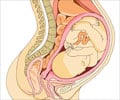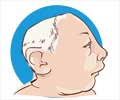Up to half of all recorded stillbirths in the worse hit areas may have been caused by hurricanes Katrina and Rita, suggests research published online.

Hurricane Katrina struck the state of Louisiana, USA, on August 29 2005, followed by Hurricane Rita a month later on September 24. Katrina was the costliest natural disaster in American history, while Rita was the fourth most intense hurricane ever recorded.
Both hurricanes caused widespread damage to property and infrastructure and left a trail of injury, death, and trauma in their wake.
The researchers used composite figures from several government agencies, showing that the hurricanes caused damage in 38 out of 64 areas (parishes) in the state, with almost 205, 000 housing units affected.
In four parishes, more than half of the local housing stock was damaged; in three others, between 10% and 50% was damaged. Elsewhere, the level of damage to housing stock was categorised as 1%-10%, or less than 1%.
The researchers then calculated the odds of a pregnancy resulting in a stillbirth in damaged and undamaged areas (less than 1% damage) in the 20 months before, and the 28 months after, Katrina struck.
Advertisement
They then used space-time models to assess whether the extent of damage wrought by the hurricanes was linked to the risk of stillbirths in a given area.
Advertisement
After taking account of known risk factors, every 1% increase in the extent of damage to housing stock was associated with a corresponding 7% rise in the number of stillbirths.
Based on these figures, the researchers calculated that of the 410 stillbirths officially recorded in extensively damaged parishes, up to half (117-205) may have been directly caused by the hurricanes and the subsequent devastation.
Their estimates suggest that stillbirths made up around 17.5% to 30.5% of the total death toll in the wake of the hurricanes.
But the risk of stillbirth may have been even higher, suggest the researchers. In the hardest hit areas, the number of live births was more than 40% lower in 2007 than it was in 2004. And in parishes with more half of the housing stock damaged, the live birth rate fell by 79% in the three months following Katrina.
This "precipitous decline" is likely to reflect the well documented exodus of residents from the coastal parishes of Louisiana into other areas, they suggest.
They point to previously published research, showing a link between maternal stress, depression, and trauma and birth complications, including stillbirths.
And they warn that climate change scientists have predicted an increase in the frequency, intensity, and duration of North Atlantic tropical cyclones like Hurricanes Katrina and Rita.
"Insofar as our empirical findings meaningfully generalise in time, the health risks to the unborn and their perinatal development will likely increase with more frequent and intense hurricanes," they write.
Source-Eurekalert












